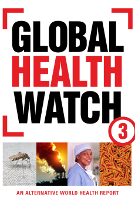13.7 Implementation of the International Health Regulations (2005)
On this page
Documents
- Documents A65/17 and A65/17 Add.1
- See also WHO Watch Report from EB130
Issues before the Assembly
The Assembly is invited to note the annual report by the Director-General on the implementation of the IHRs (A65/17). This annual report on IHR implementation was mandated by resolution (WHA61.2) that States Parties and the Director-General would report annually to the Health Assembly on the progress made in implementing the Regulations.
PHM Comment pre debate
The IHRs are the direct descendants of the Sanitary Regulations from the 19th Century. After the SARS crisis of 2003 the MS accelerated the processes of review of the IHRs and a reconceptualised and stronger version was finalised in 2005. The Fukushima Daiichi nuclear crisis in Japan is cited in this report as an example of the need for a functional prevention and response strategy.
Critical to the success of the IHRs is country level capacity and the capacity of regional and global institutions. The report notes priorities and progress made to this point in setting up monitoring systems, strengthening laboratory capacity, and tools for inspection and planning in countries.
The report notes that a significant number of countries will not meet their goals for establishing core capacities by the deadline of June 15, 2012 (para. 20) .
It may be that in some ministries of health there is a sense that capacity building for the IHRs is not a top priority. Such a view could have been reinforced by the episode of unauthorised virus sharing during the H1N1 pandemic. However, emergency preparedness should be a priority. Pandemics can wreak havoc in any country, rich and poor. Public health capabilities are needed for preparedness and response for national outbreaks as well as outbreaks which threaten to cross borders.
PHM urges WHO to consider closer collaboration with civil society and with public health professional organisations to strengthen the accountability of MS regarding capacity building for public health emergency preparedness.
Notes of WHA Discussion
Watch this space
PHM comment post debate
Watch this space




